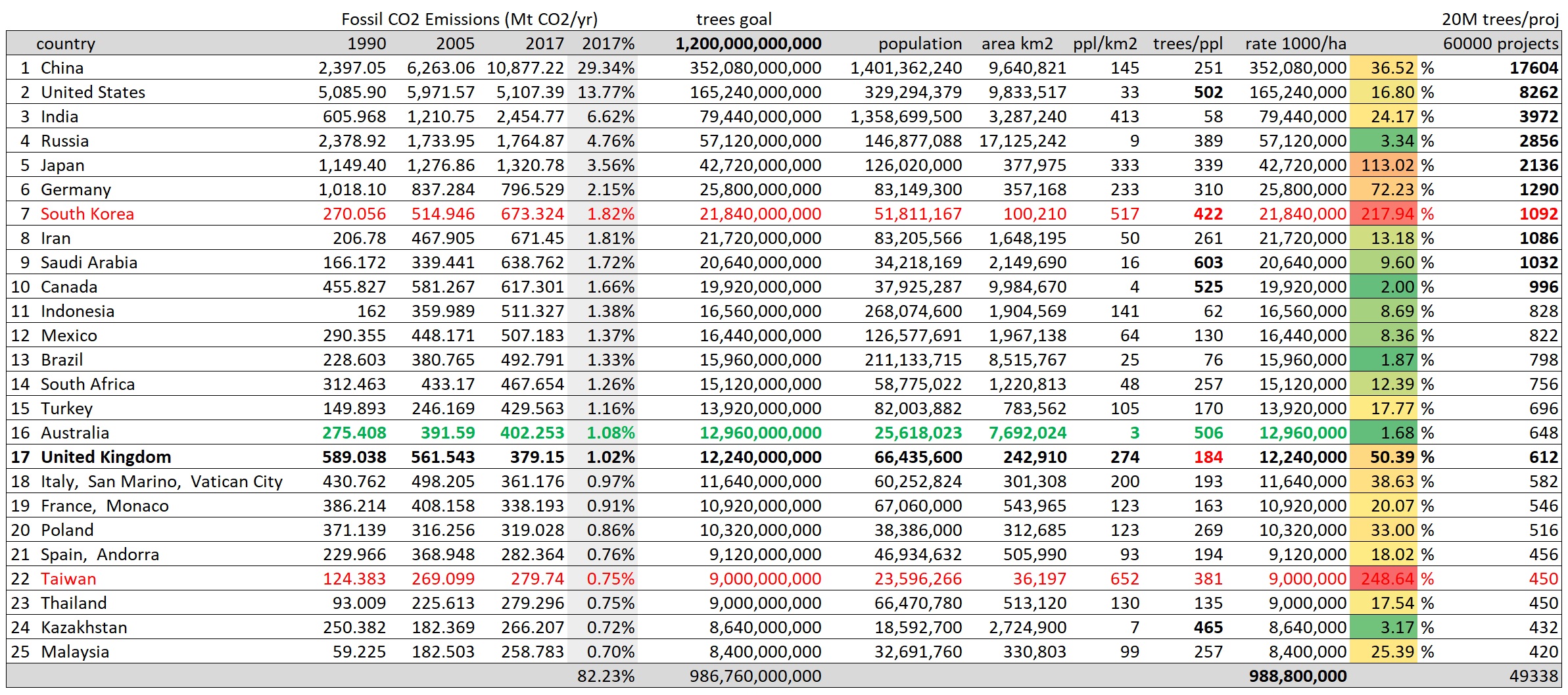Trillion Trees: Who and How Many Need to Plant?
- By Aleksandar Ristevski
- 26 Apr, 2020

To plant a trillion trees is a humongous task, and to finish it in the necessary short time, we will need to split the work somehow. So, the question is, who needs to carry out the work and how much of it?
The best way would be to split work by dividing the number of trees by countries relative to their annual CO2 emission. For that purpose, we created a list:

The calculation was done in regards to the year 2017 CO2 emissions, ignoring historical emissions. In essence, the reason to do that is that trillion trees are enough only for 10 years of emissions and not the entire CO2 deposit we need to sequester reaching stable 350 ppmv of CO2 in the atmosphere. Equally, historic for the last ten years are not taken into account, as we need to think about the next ten years where trillion trees will be barely enough to offset annual carbon-dioxide footprint.
Rapid decarbonization would have a direct impact on future cost adjustments, as explained in the “carbon storage tax” idea article.
The first thing to notice about the above list is that the top five economies China, USA, India, Russia and Japan, contribute almost 60% of all fossil fuel CO2 emissions.
Furthermore, the carbon emission of the first 25 out of 194 countries is more than 82% of the world’s total fossil-fuel CO2 emissions.
Column “trees/ppl” represents how many trees each person needs to plant in a given country to complete trillion tree project - proportional to CO2 emissions respective to their country. Also, it is noticeable that some countries emit so much CO2 per capita, like South Korea and Taiwan, that in order to plant enough trees they would need an area two times bigger than areas of their respective countries.
How to solve this area problem?
If we apply, “carbon storage tax”, then countries that emit more should compensate their carbon footprint by paying to the countries that have more planted trees.
In the case of South Korea, it would mean paying ~$22 bn per year ($1 per tree), each year until they decarbonize their economy. As South Korea’s GDP was $1531 bn in 2017, $22 bn should not be as soo high cost to pay.
We mentioned big economies, but what with smaller countries and undeveloped economies? Every world’s country has some kind of footprint, so the amount of work should be proportional to their economy and sponsorship received trough carbon tax/credit schemas.
Developed countries, regardless of their size, will still need to carry out most of the work in proportion to their CO2 contribution.
On the other hand, undeveloped countries as those in Africa or South America could create healthier economies and improve living conditions, by stopping grass burning practices and deforestation.
Usage of Holistic Management to reforest and rewild land would prevent soil erosion and desertification, preventing climate migration providing enough food for the local population. Additionally, accepted “carbon storage tax” would encourage them to preserve their forests.
Furthermore, it would be great if smaller countries could do a similar as Costa Rica did, by switching 100% to renewable energy sources and achieving a net-zero carbon footprint. Full and rapid decarbonization by balancing a measured amount of carbon released with an equivalent amount sequestered would set an example for others and also show that is it possible to function without being dependant on fossil fuels.
You can find your country in the Complete List, and if it is not there, maybe you can help us by subscribing and adding necessary data.
